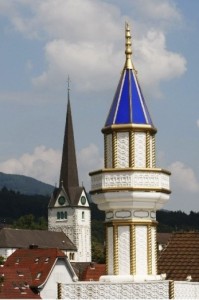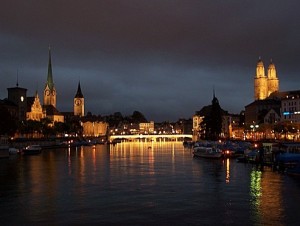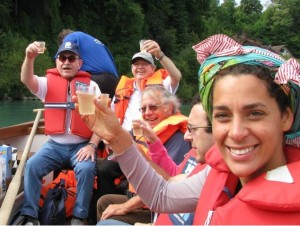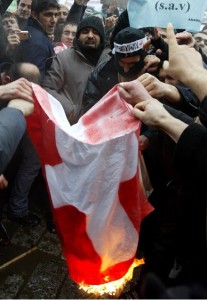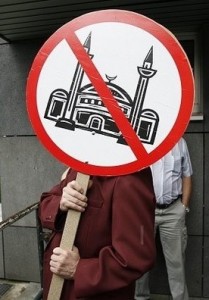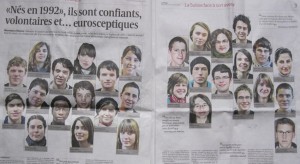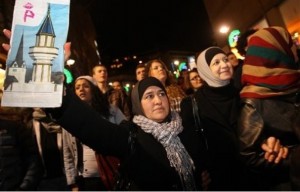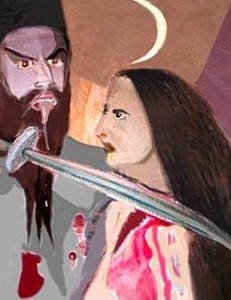Open Cities14 Minaret Controversy
Changing city skylines
The people have decided: no more minarets in Swiss cityscapes. The question is how and why. The controversy over minarets has to be put into the context of who is shaping city skylines, with what artifacts, for what purpose, with whose legitimacy. Ever since cities have been built they express the power structure of those who made them and those who inhabit them. As Rousseau said, houses make a town, citizens make a city.
Revisiting Mumford
Mumford’s ‘City in History’ (1961, Pelican 1979) divides the evolution of cities into two strands: the open city and the city of domination and power. The open city is the symbol of calmness and confidence. Like the initial village this symbiotic city puts new forces at the disposal of humanity through organic association, resorting to voluntary cooperation, mutual accommodation and reaching wider communication and understanding. He ranks the ancient cities of the Pharaohs among them. However, the city which dominates the history of humankind is tempestuous, riddled with uncertainty, danger and anxiety. It relies on domination, heartless exploitation, parasitic enfeeblement, expansion based on violence and conflicts. As ‘instruments of extraction and concentration of surplus’ according to Childe, these predatory, often fortified cities affirm themselves through symbols of power.
Do these male symbols of domination make sense for Mumford’s ‘One World Man’? Do they have a place in the city which enables citizens to express and actualise their human personality? Mumford’s vision of the future city represents the shift from the power economy to the life economy, the city as an ‘organ of love’ nurturing care and culture of men. What is the dramatic representation of such a humanistic city with human beings in charge of their own destiny, taking an active and formative part in shaping their city? Would it make the competition of dominating the city skyline with controversial power symbols redundant? Would it offer a fertile ground for building consensus of what the humanistic, integrated, multicultural open city of the future would look like?
Fear of the other
Whether held by astronomer priests, unifying kingships or predatory merchants, changing power structures are dominated by politics, religion, absolute rulers, energy (Mumford’s coketown), or money. Each of them impose their visual marks on the city and its skyline: hill-top fortresses, cathedrals with powering spires, monumental palaces, factory stacks, self promoting town halls, seats of modern dictators, skyscrapers for financial institutions. The arrival of minarets on a western skyline with its own idiosyncratic symbols of power has clearly aroused anxiety among mainstream society. While church spires cohabit with secular tower blocks, historic palaces with modern town halls, why are minarets so offensive? Why are they not trusted to integrate into the existing urban fabric which symbolises the socio-cultural and moral values of its inhabitants? Why is the influx of 400,000 Muslims, a mere 5% of the population, so disturbing in Switzerland? The unexpected dual support by a majority of the population and the cantons of an initiative from xenophobic quarters has unsettled Swiss public opinion and brought shock waves through the world on which Switzerland is very dependent.
This stance of exclusion supports Mumford’s assumption that the conflicting city is outflanking the symbiotic city. Is there a path from this urban reality to an open city? The public debate triggered by this political minority manoeuvre, using the instruments of democracy to what many consider perverse finalities should provide some answers.
Vox populi
‘Le Temps’, the major daily Swiss newspaper in French, undertook a survey (published on 30/12/09) among young Swiss people from a broad spectrum of ethnicities. Born in 1992, the year when Switzerland left the European Economic Area, and reaching voting age in 2010 they were asked about how they perceive their future within or outside Europe, within or outside a cosmopolitan environment, at a time when Switzerland’s position on the fence seems untenable. Aware of their privileged position and convinced that Switzerland offers them the best opportunities, they fear that small Switzerland could become too insular.
However, in their view EU membership is not a way toward greater integration but a threat to direct democracy whose empowerment they appreciate, although they value the contribution of the EU to European unity, peace and mutual assistance and consider that the increase of foreigners will lead to European integration eventually.
Their position regarding the minaret ban varies. Some Muslims among them see it as an attack on Islam while others find that it harms Swiss tradition of tolerance and neutrality, although they are critical about certain Islamic customs, especially regarding women and think that it is healthy to bring such controversies into the political arena.
What is clear from the survey is that the Swiss schooling system has a tremendous power of integration. Perhaps the key lesson for open cities is not to segregate children in schools and let them experience different cultures and customs while they are growing into adults.

